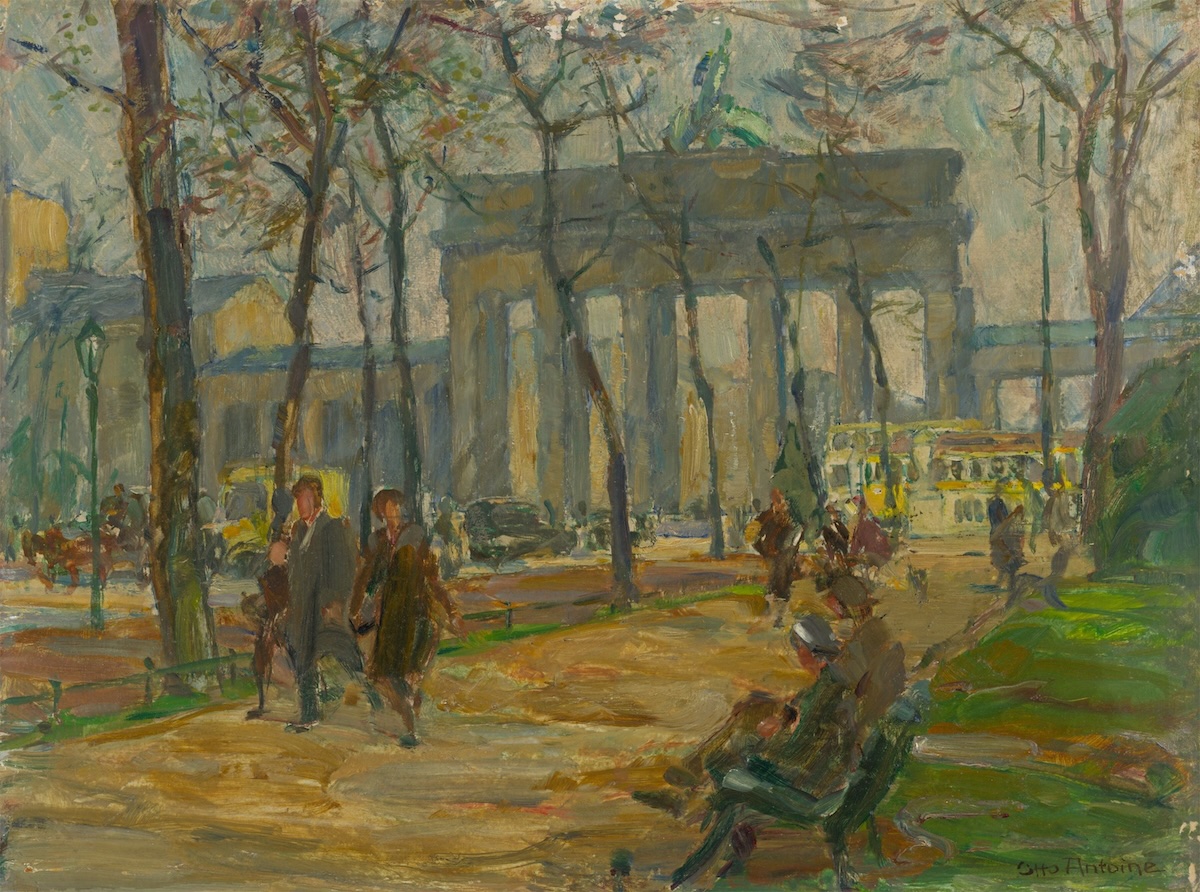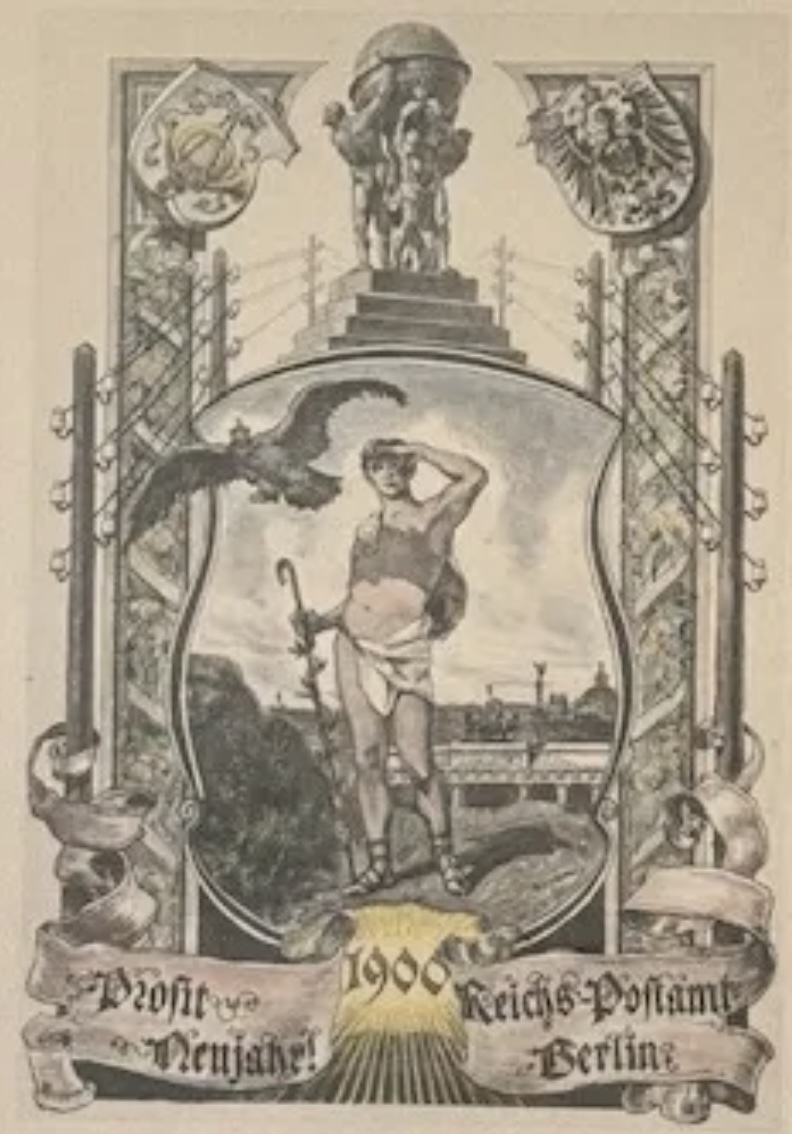

Otto Antoine (1865-1951): “The Painter of Berlin” between Compliance and Defiance
Presentation by Kathleen Langone and Q&A with Jacquelyn Delin McDonald
October 9, 2024 @ 12:00 pm - 1:00 pm
| FreeKathleen Langone speaks about the German born painter Otto Antoine (1865-1951), followed by a conversation with Jacquelyn Delin McDonald from the University of Texas at Dallas.
Image above: Otto Antoine, Brandenburg Gate, 1928. Oil on cardboard
Antoine displayed an early artistic talent but, due to economic circumstances, started a long-term career as a civil servant, initially as a clerk at a local post office. His drawing abilities were soon recognized, and he increasingly was used as a painter, engraver and designer of stamps for the German postal service. They also sent him to many far-flung places outside of Germany (such as Africa) to paint bucolic landscapes of those countries, which were used to promote their international services.
In 1891, he had been enrolled at the Prussian Academy of Art to receive formal art training. There, he was strongly influenced by Franz Skarbina, co-founder of the Berlin Secession, who exposed Antoine to Impressionism. Antoine’s oil paintings soon reflected this style. The stability of his job allowed him to spend considerable time creating his art. He became a member of the Association of Berlin Artists.

Otto Antoine, New Year 1900 Reich Post Museum, 1900. Todd Barrowcliff Collection

Otto Antoine, Self Portrait, c. 1920. Todd Barrowcliff Collection
Antoine officially retired from civil service in 1930. To continue creating art, he became a member of the Nazi controlled Reich Chamber of Culture in 1933. According to his family, Antoine hated the Nazis and painted Hitler as the devil. These artworks were found by the SS, he was beat up and the paintings destroyed. Antoine increasingly depicted landscapes and Berlin cityscapes. His artwork was displayed at Große Deutsche Kunstausstellung (“Great German Art Exhibition”) at Haus der Deutschen Kunst in Munich, which displayed Nazi-supported art between 1937 and 1944.
This presentation will present the full arc of Otto Antoine’s career and pose questions around both his defiance and compliance with the Nazi art edicts.


Otto Antoine, Country Side and Church, not dated. Todd Barrowcliff Collection
Kathleen Langone is a researcher and freelance writer. Prior to 2000, she worked part-time as a researcher for state government agencies, providing records on natural history. Recently she has produced a podcast series, People Hidden in History, with 22 episodes covering profiles of lesser known but fascinating persons in America from the 1600’s through to the early 1960’s. One of most popular episodes, chronicles the life and times of William Shirer in 1930’s Berlin and his first-hand account of the rise of Nazism. She has had an active speaking career being well received at museums, historical societies and has been interviewed on TV and radio. Most recently she did extensive research on two artist who were also relatives, Otto Antoine and Amalia Kussner. Her biography on Kussner, a Gilded Age artist, will be published in spring of 2025.
Dr. Jacquelyn Delin McDonald is an art historian whose research focuses on art and its historicity from German-speaking countries, sculptural types, American art, and women artists during the long nineteenth and twentieth centuries. Her current book project involves the study of German-American sculptor Elisabet Ney. She has published on Ney as well as the ‘sculptress phenomenon’ of the late-nineteenth century. She is currently a Lecturer at the University of Texas at Dallas and adjunct professor for the University of North Texas, where she designed and taught a course on Nazi-Looting, Provenance, and Restitution. She has held fellowships with the U.S. Capitol as well as the Edith O’Donnell Institute of Art History.


